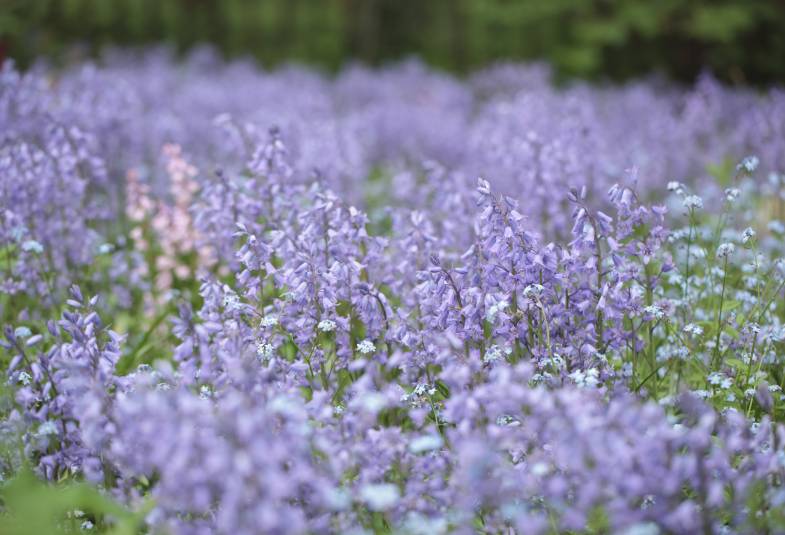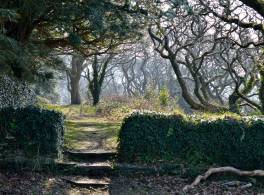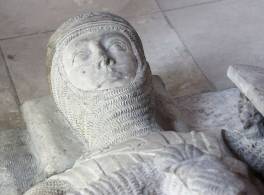Plants and animals are essential for sustaining the ecosystems that give us food, fuel, health and wealth.
As Christians we are called to care for our God-given creation. Churches and their churchyards are an important part of the diverse natural habitat of England.
We can help you care for and promote yours.

Biodiversity is the variety of life on Earth
1 in 7 of the UK’s wildlife species is at risk of extinction.
Churchyards are important for their habitats and as refuges for wildlife and plant life. Most churches have some green space. And in some urban areas they are the only green ‘breathing’ space available for both wildlife and people.
We estimate that 10,000 of our 16,000 churches have churchyards. It’s a precious resource which can make a huge difference to the biodiversity of the UK.
So, good management is essential.
Find out what wildlife lives in your churchyard
To survey your churchyard:
- Gather a group of volunteers
- Ask your local wildlife trust if they can help
- See if any surveys have already been done
- Check the National Biodiversity Network database for information
If your churchyard’s natural heritage is under threat, then you might consider getting a professional survey done. But if you just want to understand your area better, then try these basic steps:
- Choose a day between March and September when plants are in flower and habitats are at their most active
- Start with a sketch map of the churchyard and mark it with basic features like buildings, paths, walls, in-use burial areas and compost heaps
- Record the trees, their type, circumference, estimated height and spread of their branches
- Outline the broad areas of habitat (e.g. areas of scrub, regularly cut grassland, shady areas and biodiverse areas)
- Take photographs and record where the photograph was taken, the direction and the date
- Record the birds, animals and insects you can see and where you saw them
Encouraging wildlife in your churchyard
Once you have an idea of how wildlife uses your churchyard you can start to plan how to manage and encourage it.
Decide on broad areas and what approach you will take for each. Draw up an action plan with timescales.
- What are the most important habitats and other features?
- What is important to local people?
- What can we do or change now?
- What might take a bit longer to solve?
- What do we need help with?
- Which sites can we get to and work on? Have we got PCC agreement?
- What kinds of practical work can the group focus on?
Many groups organise working party days to tackle churchyard jobs. These can be a great way to engage the community and local schools. Here are some ideas to help you get started:
Review your wildlife plan every few years. As the climate changes so will the way wildlife uses the churchyard.
Don’t forget to communicate what you are doing as widely as possible through posters, a display or an article in the parish magazine.
Grassland
Old churchyards often have fantastic, flowery and species rich grasslands as they have been so little disturbed over the centuries.
To see what flowers appear in your churchyard, let a patch of grass grow long one spring. Look out for waxcap fungi in autumn.
To encourage grasslands:
- Keep up the traditional way of looking after your churchyard unless there are good reasons for change
- Collect the grass cuttings after each mow if you can. Leaving them in place can smother plants and lead to a decline in species range
- Choose the best grass cutting regime for your churchyard
- Keep a mini wildflower meadow area. It benefits wildlife, is colourful and is less maintenance for you
Dormice
The population of hazel dormice has gone down significantly over the past century. They are now a European Protected Species and a UK priority species.
They are now only mainly found in southern parts of England and Wales because of changes in:
- Woodland management
- Farming practices
- Loss of hedgerows
- And the fragmentation of woodland
You might find them in your churchyard.
The People’s Trust for Endangered Species can help. They:
- Coordinate a national monitoring programme
- Have reintroduced populations to some counties
- Run training courses in dormouse-friendly woodland and hedgerow management
Hedgehogs
The once common hedgehog is now under threat from development and habitat loss.
In just 10 years, their numbers have fallen by 30% and we now think that there are less than one million left in the UK. They are disappearing from our countryside as fast as tigers are worldwide!
Your churchyard can make the perfect home if you manage it in a wildlife-friendly way. Get help from:
Or call the British Hedgehog Preservation Society’s hotline if you find one in trouble.
Bees
Bees are the world’s most important pollinator of food crops. They support healthy ecosystems. The UK is home to over 250 species of bee. But bees are in trouble. A quarter of bee species are under threat.
You can support bees and other pollinators in your churchyard by growing flowers rich in pollen and nectar.
Are you on a B-Line? These ‘insect pathways’ run across the country and are set up by Buglife.
Perhaps you could even keep bees. Contact the British Beekeeper’s Association for advice.
Badgers
Badgers in burial grounds are a sensitive subject. And often distressing if they directly disturb graves.
If a badger sett disturbs human remains, then you do not need to apply for faculty to reinter them as long as you do it with due reverence.
But badgers are legally protected. And you do need a licence to move or close a sett.
If their presence is becoming a nuisance, get advice from Natural England.
Wildlife in your church building
Talk to your local community
Churchyards are not just nature refuges. They are places of burial and remembrance.
You need to take the views and expectations of the local community into account when making your management decisions.
People want to be able to:
- Use the site
- Visit graves
- Read memorial inscriptions
- Feel that the management and use is appropriate and respectful
In most cases, any tension can be eased with good communication and local engagement.
Use your DAC as the first port of call for enquiries or concerns about your churchyard.


